|
By ELLIOTT DENMAN
COLTS NECK, NJ – The lanky lad, seemingly destined to run his way into his sport’s biggest time, has done it. This tall young man’s name is Gavin Schmitt and his decisive triumph in the 58th annual Captain Ronald Zinn Memorial 5K at Dorbrook Park on April 2 was a clear indication that much better achievements are just ahead. He’s just 14, a student at St. Leo the Great School in Lincroft, and set to join the always-power-packed distance running lineup at Christian Brothers Academy in September. On this chilly, blustery Sunday morning, the Holmdel resident toured the Dorbrook course in 16:12.76 in becoming the youngest winner in the Capt. Zinn event’s long and distinguished history. Taking an early lead, Schmitt won decisively over Locust resident Matt Coleman (17:30) and Red Bank’s Benjamin Hutterer (17:41). Schmitt has already placed high in national age-group events. The best yet now awaits him. Emma Bradley, 17, of Florham Park (18:47) led the women’s division of the Capt. Zinn event hosted by Shore Athletic Club in another of the club’s year-round schedule of events in all branches of track and field, for athletes of all ages. Co-featured with the Capt. Zinn Run was the traditional 5K Racewalk, where Luis Alberto Campos of West New York (28:52.11) edged out Israel (Jerry) Soto of the Bronx, NY (28:54.25) for over-all honors, and Cristiana Rodriguez of Elmwood Park (32:28) took women’s top walk honors. This was the 58th annual edition of the race, honoring the memory of Capt. Zinn, the heroic West Pointer and two-time USA Olympian who gave his life for his country , July 7, 1965, in Vietnam, and again saluted the service of all Vietnam veterans. Capt. Zinn, who’d competed in Long Branch, Asbury Park and Seaside Heights as a West Pointer in 1961-62-63-64, went on star for the USA Olympic team in the 20-kilometer racewalk at the Rome Olympics of 1960 and the Tokyo Olympics of 1964. His sixth-place finish at Tokyo remains the second-best-ever in Olympic annals by an American racewalker at 20K. He’d also been an excellent runner on the West Point cross country team, twice advancing to the NCAA Championships. The races are sponsored by NJ Natural Gas. Co. in cooperation with St. James School,of Red Bank and Jughandle Brewing Co. and in support of the Lt. Dennis Zilinski II Memorial Fund. Most senior stars were Olie Nelson, 87 of Farmingdale, and Frank Bergson, 84, of White House Station. Nelson ran a 33:41, Bergson walked 54:30. Full results can be found at www.compuscore.com. The full schedule of upcoming Shore AC events can be found at www.shoreac.org.
1 Comment
MY MILLROSE UPDATE: GI DODDS 4:05.3 TO
YARED NUGUSE 3:47.38. ALL-NEW EXPERIENCE: Checking out the Millrose Games action on home TV. WEST LONG BRANCH, NJ – First it was a slight fall. Then the Covid. Then a touch of pneumonia. Then some cardiac distress. Then a hospital stay and a rehab visit, Then a Pacemaker. Then another hospital stay and another rehab visit. So folks, it’s been a tough last seven-plus months, all after returning from my 18th trip to the World Track and Field Championships in Eugene. Yes, this was the 18th Worlds and I’ve been told – subject to ratification, of course – that I’m now the only USA journalist to have covered all 18 of them. But I may also be the only one of my distinguished press box colleagues to wind up on the injured reserve list after returning home. Thanks to my wonderful family – dear wife Jo, daughters Sue, Judy and Liz, and grandkids, along with some great medical folks, though, I am happy to report that I’m on the comeback trail. Then again, it’s a slow, gradual process and I’m ‘hanging in there,’ as they say, through it all. So that should explain to those who’ve been asking – and I’ve been told that quite a few have, which is comforting - hey, where’s Elliott?’ – where I’ve been hanging out, lo, these many months. Well, where have I been hanging out? Well, home, mostly. Other than big family occasions, a goodbye gathering for a distinguished teammate – Mr. Bob Bazley - and wife Lisa, (both of them terrific therapists) who are moving to Maryland - visits to doctors’ offices, and occasional rides around town to keep up with noteworthy developments - buildings going up, buildings going down - in the neighborhood. But there have been many saving graces. Lots of good folks visited through my hospital/rehab stays. Lots more have e-mailed their best wishes Many others got on the phone, A whole bunch more resorted to old-time tactics, i.e, the U.S. Postal Service. So there you have it, and here I am. Thank the heavens this is the age of immediate-if-not-even sooner, electronic communication. Thanks to the networks being gracious enough to interrupt their steady diet of chatter/odd-ball stuff/latest developments in the high-octane world of pro sports, to actually allocate a few precious hours of air time, to give our greatest of Olympic sports an hour or two, every now or then. I’d been going to the Millrose Games for eons. My first Milrose days dated back to the Evander High version of me. Well remembered is scrambling up those endless steps to Madison Square Garden’s upper deck to grab a railing-side view of so many greats of the day cavorting down below. Very first of those Millrose days was in February 1948. It was amazing/stunning/electrifying to see “The Flying Parson,” the Rev. Gil Dodds, crush a quality field – by at least a half-lap, as I remember – to take the Wanamaker Mile in the world-record time of 4:05.3. “Wow,” wasn’t good enough for that sizzling 11-lap performance on the Garden’s boards. Anyone there that night was sure they were seeing the first Olympic 1500-meter champion in a dozen years / or since Jack Lovelock’s epic Berlin win in 1936. Alas, it didn’t happen. Never came close. He was injured and out of it by the London-bound team’s Olympic Trials. Then and there, I learned that such are the sometimes heartbreaking days of this sport. By the way, Lovelock and I had Brooklyn ties. But his were the most horrendous possible – toppling off a subway platform. Mine were far better. Two of them. My mom was an alumna of Bushwick High. First date for Jo and I – circa 1960 – took us to the infamous Coney Island parachute jump. It scared the heck out of dear Jo and there’s been a mighty fright of heights in her ever since. So many other great Millrose memories are still affixed to me, as all the years rolled by. The great Wanamaker Milers who followed Gil Dodds: Don Gehrmann, Fred Wilt, Fred Dwyer, Ron Delany, Josy Barthel, Tom O’Hara, Jim Beatty, Kip Keino, Marty Liquori. Marcus O’Sullivan, Noureddine Morceli, Bernard Lagat, Matthew Centrowitz, Oliver Hoare. The great dashmen: Andy Stanfield,Lindy RemiginoFrank Budd, Sam Perry, Mel Pender, Herb Wash-ington. Houston McTear, Leroy Burrell, Maurice Greene, Andre Cason, Shawn Crawford, Marvin Bracy. The great hurdlers: Harrison Dillard, Elias Glbert, Hayes Jones, Willie Davenport, Rod Milburn, Greg Foster, Renaldo “Skeets” Nehmiah, Jack Pierce, Allen Johnson, Terrence Trammell, Devon Allen. The great 400-600-800-1000 guys: Mal Whitfield, Reggie Pearman, Roscoe Browne, Tom Courtney, Tom Murphy, Arnie Sowell, Larry James, Martin McGrady, Bill Crothers, Rick Wohlhuter, Don Paige, Mark Everett, Johnny Gray, Antonio McKay, Butch Reynolds, Andrew Valmon, Donavan Brazier. The great distance men: Horace Ashenfelter, George Young, Sulemain Nyambui, Said Aouita, Doug Padilla, Reuben Reina. Ryan Hill. The great leapers and vaulters: Bob Richards,John Thomas, Bob Seagren, Valeriy Brumel, Don “Tarzan” Bragg. Sergey Bubka, Dwight Stones, Franklin Jacobs, Jimmy Howard, Milt Goode, Billy Olson, Carl Lewis, Joni Huntley, Stacy Dragila, Jenn Suhr. So many of my racewalking comrades: Todd Scully (whose 5:55.8 one-mile performance in 1979, first man to break six for the mile, made him the Roger Bannister of his event), Ray Sharp, Tim Lewis, Curt Clausen, Tim Seaman, Jon Hallman, Nick Christie, Rachel Seaman, Marie Michta-Coffey, Taylor Ewert . So many other epic ladies: Madeline Manning, Wilma Rudolph, Wyomia Tyus, Gwen Torrence, Chandra Cheeseborough, Stephanie Hightower, English Gardner, Cheryl Toussaint,Jan Merrill, Mary Decker Slaney, Jackie Joyner-Kersee, Michelle Freeman, Gail Devers, Doina Melinte, Joetta Clark Dgggs, Maria Mutola, Hazel Clark, Carmen Diane Dixon, Jearl Miles Clark, Carmen Douma, Ajee’ Wilson, And so many more: The mighty shot putters, high school kids, the relay runners, the masterful Masters. No longer at “The Garden,” where crowds in the 17-18,000 vicinity were routine, the Millrose Games moved up town – 135 blocks - to the Armory Track Center in 2012. All the expected transpired. Performances were even faster /more dazzling on the Armory’s superb 200-meter track. As the crowds shrunk by some 70 percent. Bu t that’s the c’est la vie of indoor track and field these days. Great meets, great racing, great facilities all over the nation and the globe, great people running the show – at Millrose, Fred Schmertz, Howard and Judy Schmertz, Dr. Norbert Sander, Ray Flynn, Rita Finkel, Jonathan Schindel, Mike Frankfurt and more - and lots of great officials, but far fewer actual witnesses. Yared Nuguse ( a sensational 3:47.38 Wanamaker Mile), Ryan Crouser, Christian Coleman, Noah Kibet, Chase Ealey, Katie Moon, Aleia Hobbs, Alicia Monson, Laura Muir, Abby Steiner and- yes, once again, staying unbeaten at the Armory for a an incredible 10th straight year, Ajee’ Wilson - delivered superb performances at the 115th edition of the Millrose Games, but generated far-far less attention. NYC – which once boasted seven daily newspapers, each with its own track and field “beat writer” - now is down to three. And “The Old Gray Lady” that still erroneously boasts it contains “all the news that’s fit to print,” didn’t bother to cover it at all. At least in the old fashioned way, with full story, often a columnist’s sidebar story, accompanied by complete agate-type full summaries. But let’s face it – those good old days may never be back. The sport – sadly but truly, at least in the USA – is beginning to be relegated to the once-every-four-years category by the m- m-m-m-mers (most major media moguls). Come Olympic year 2024, we’ll be in there with swimming, gymnastics,cycling, maybe rugby sevens. Fortunately, however, NBC/Peacock gave it two full TV hours on Feb. 11. Thank you, execs at 30 Rock. Thank you, Ato Boldon, Paul Swangard, Sanya Richards-Ross, Kara Goucher, Lewis Johnson. You stepped to the plate, took full swings, and got it done..Well, not all of it, as we’d wished, but most of it. But such is 2023 life in most-major-media-moguls’ fastest lane. With no thanks to my assortment of difficulties, I had to sit this one out. But home TV was in excellent working order and the best of alternatives to actually being at the Armory. The NBC/Peacock crew was back in action week later at the USA Indoor Nationals in Albuquerque, again a meet I had (a) once competed in, when it was at the Garden, (b) got to cover for years and years and years. And years more. Now to more current events: Just wanted to report that I’m making progress. The medical team tells me my vital signs are perking up. Good wife Jo and family are lending world-class support. There’s definite hope for better things ahead. Maybe even getting out of the house and tracking my favorites, live and in person. Someday soon. Don’t count me out. As General Douglas MacArthur famously put it. “I shall return.” Definitely maybe. Like the many 50K and 50-mile walks and London-to-Brighton 52.8-mile strolls in my dossier, it’s a clearcut case of one step at a time. Save me a seat at Millrose 2024. Eighteen Gold medals, thirteen Silvers, six Bronzes.That was the tremendous haul by our terrific Shore AC athletes at the annual New Jersey-New York
USATF Association Open and Masters Dual Meet at Ocean Breeze, Staten Island, on Saturday, Feb. 25… Verrrrrrry well done, one and all. National Masters Hall of Famer/Multiple National Record-Breaker Nene Lewis was again sensational with three golds in the W60 bracket – putting the shot 10.04 meters, tossing the weight 15.89, and heaving the superweight 11.65.. Dr. Harry Nolan, another National Masters Hall of Famer, ran off with the M75 800 title in 3:05.52, as veteran teammate John Kuhi (a Shore AC Hall of Famer along with Lewis and Nolan) ran third (5:13.28.) Dr. Ivan Black starred in both track and field events – collecting two M70 golds, four silvers and one bronze, busily shuttling between events in his personal sep-tathlon. Doctor B won the high jump (1.25) and shot put (7.66) and took seconds in the 60-meter hurdles (13.20),long jump (3.55)and triple jump (7.78) and a third in the 60 sprint (10.35.), Diane Essilfie dashed to the W45 60-meter title in 8.68. Another sprint star was clubmate David Gritz, second in M70 at 9.65. Bill Indek sped home fifth in the M75 60 in 13.05 and sixth at 200 (53.17.) Runner-up in the M45 was Alexander Buoye (13.43.) Pat Toland won the M50 weight (tossing 14.78) and wound up third (at 11.93) in the shot put, an event won by teammate Gerry Donini , the former IC4A SP gold medalist, at 12.82. Then it was SAC’s Ralph Bischof’s turn in the throws ring and he came through with an M60 superweight win at 5.19 and a silver in the weight at 7.42. Michael Twist, a star of Shore AC’s Millrose Games second-place DMR team, ran off with M25 800 title in 1:59.08. Runner-up in the men’s Open 800 was Shore AC’s Michael Drews (2:02.73.) Alan Laws Jr (who is a World Police Championship gold-medalist) sped off with the M30 400-meter title 51.41. SAC stalwart Matt Wallack was a close second in the M60 400 at 1:02.79, just 0.24 back of the winner. Alexander Buoye registered a 13.43 second place in the M45 hurdles. The one-mile racewalk saw Shore AC’s Ryan Allen (a freshman at Villanova who was the nation’s premier scholastic racewalker in 2022, taking Men’s Open and over-all honors in a quick 6:47.50, with teammates Rich Luettchau first in M35 (6:56.90), Luis Campos first in M60 (9:08.77) and Tim Chelius first in M65 (10:23.38.) The M50 1500 final saw clubmates Chris Rinaldi third (5:18.66) and Michael DiLeva fourth (5:33.74) In the Open 3000 meters, Shore AC’s Xavier Buoye (12:05.60 was a winner and so teammate Michael Salamone in M60 (11:25.83), with John Delaney third in M50 (12:36.95.) Meanwhile, back in the Ocean Breeze throws cage, veteran Shore AC standouts Ira Wolfe and George Kochman were displaying their talents, too. Wolfe – who held the Montclair State University shot put record for over a half-century and was one of the top performers on Shore AC’s famed 1969 tour of England, Scotland and Wales, finished second in both the M75 weight (6.45) and superweight (2.31) and third in the SP (5.69.) Kochman, well known as one of the nation’s best track and field writers for many years –his stories for the Staten Island Advance have been must-reading for the borough’s track fans - as well as well as a famed coach (Farrell HS and Wagner College) and top national distance runner , turned his attention to the M80 shot put, and came through with a 4.95 silver-medal performance. No official team scores were announced, but Shore AC surely would have been “right up there.” Once again, the youngsters (mostly middle-schoolers) of the Merrell Noden Track Club scored lots of points, too. The MNTC, organized by Shore AC alumnus – and famed comedian – Joe Bolster – is named for and is a tribute to the late, great Shore AC / Lawrenceville School/Princeton University middle distance star and noted Sports Illustrated sports writer who left us far too early. Xxxxxxxxxxxxxxxxxxxxxxxxxxxxxxxxxx BUT THE OCEAN BREEZE meet was just the start of a busy weekend. Very next day, Sunday, Feb. 26, five Shore AC stalwarts did a great job of it at the Potomac Valley Open and Masters Championships at Landover, Md. And it was SAC teammates Tim Chelius and Ralph Bischof coming through on the gold standard for the second straight day. Villanova alumnus Chelius won theM65 3000-meter racewalk in 20:01.31 and made his debut as a shot putter with a 6.75 win. Bischof landed a silver in the M60 shot put at 9.05. Weight standout Marilyn Coleman added two more firsts for Shore AC with her W45 victories in the W45 weight (12.99) and superweight (8.24) events. Frequent National Open Championship place winner Kris Kornegay-Gober led theM30 high with a good clearance of 2.10, then placed second in the 60 sprint at 7.43. Spider Rossiter was a busy teammate, too, netting silvers in the M70 800 (2:43.36) and 1500 (5:34.85) events. Xxxxxxxxxxxxxxxxxxxxxxxxxxxx NEXT ON THE MASTERS SLATE is the USATF Indoor National Masters March 11-12 in Louisville, Ky. Shore AC teammates entered are Neni Lewis, Rick Lee, Dr. Harry Nolan, Dr. Ivan Black, Tim Chelius, John Kuhi, Stan Edelson, Carl Huff and Michael Jennetta. As ever, Go Shore AC Go! Go Team Go ! 1. Sam Allen, Shore AC 6:13.58 PR performance!
5. Ryan Allen, Shore AC, 6:47.17, PR performance, 7. Rich Luettchau, Shore AC, 6:53.74.//// ////////////////////////////////////////////////////////
SHORE A.C. RELAY RUNNERS AND RACE WALKERS SCORE AT THE 2023 MILLROSE GAMES TRACK AND FIELD MEET2/15/2023 Shore Athletic Club runners and race walkers claimed a number of medals at the
hosting of the 115th Annual Millrose Games on Saturday, February 11th. Held at the N.Y. Armory facility, the event was a circus of youth, open, professional and master’s athletes, which led to three American records being set during the day. In the men’s open Distance Medley, the club had two excellent entries. The Shore A.C. “A” team powered to a second place just behind the Garden State Track Club win. The team of Michael Twist, Jacob Dinerman, Luke Petela, and Thomas Cook clocked in with a fast 10:05.66. Not far behind, in 7th place was the clubs second team of Matt Farrell, George Alexandris, Michael Drews and Ryan Rafferty who finished in a good 10:30.83 to give varsity Coach Joe Campagni two excellent showings for the day. In the masters 4 x 400 relay events, the clubs four entries came home with two firsts, one second and one fourth place finishes. In the combined 60-69 and 70-over race, the 60’s team of Bob Andrews, Matt Wallack, Keith McQuitter and Rick Lee came from behind in the second half of the race to win in 4:24.0, edging a very close Greater Philadelphia Track Club by .85 seconds. The clubs 70-over “A” team of Spider Roister, Ivan Black, Harry Nolan and Rick Lapp won their division race in 5:15.75 despite a major loss of time with a baton mishap on the first exchange. The clubs 70-over “B” team pulled a surprise in the event by capturing the second place medals in 6:45.66. That team was comprised of Kerry Gillespie, Ken Wilson, Przemek Nowicki and Hugh Sweeney. The Clubs 50-59 team were in a tight battle with some of the best teams in there age group in the country, but managed to score a very close fourth place in 4:15.13. Club members Greg Calhoun, Chris Rinaldi, Ron Brock and Brian Hill led the charge. Rinaldi was unofficially awarded with the “best fall down at the line” award as he was handing off his baton, of which occurred a number of such falls in the various master’s races. Doing standby duty as the alternate for both the 50-59 and 60-69 teams was LDR standout Scott Linnell. The clubs race walkers had an excellent showing in the one mile race walk event. Sam Allen cruised to a run away victory in 6:13.58, winning by over 13 seconds from the second place finisher. Brother Ryan Allen finished in a solid fifth place in 6:47.17, with the veteran Rich Luettchau scoring 7th place in 6:53.74. Shore A.C. alumni were out in force in different events. American indoor 800 meter record holder Ajee’ Wilson stepped down in distance to win the 600 meter run in 1:24.85, while 2016 1500 meter U.S. Olympian Robby Andrews served as the pacesetter for the open men’s mile, taking the group out in an easy 1:58 first 800 meters before stepping off the track. It was great to see Robby back in action after some downtime, as he begins to get back into excellent running condition. By Dr. Harold Nolan Ryan Rafferty and Amanda Huneke took the men’s and women’s crowns in the 59 th
edition of the Asbury Park Carnaval 5k run on December 31. Rafferty went right to the lead at the start of the race with runners Justin Scheid and Riley Maher hot on his heals. At the midway point all three were close together, but Rafferty pulled away on the return trip to Asbury Park’s Convention Hall to break the tape in a fast 15:47.92. That time placed Rafferty as the 11 th fastest runner in the history of the event. Scheid, a two time winner of the event landed a close second in 15:53.28, while Maher clocked in with a 16:08.89. Amanda Huneke established a strong lead throughout the race, finishing in a fast 18:26.44, but well off the record of 17:35 set by Kerry Dyke in 2019. Runners Erika Flores and Casey Hopkins battled it out for most of the race, with Flores pulling away to land second in 18:42.75, with Casey taking third in l8:51.21. Over 300 runners and walkers entered the event this year. The Polar Bear races were again conducted by the Shore Athletic Club, under the direction of Erin O’Neil, a former winner of the women’s race, assisted by Coach Joe Compagni. Running in 59 th edition of the race was Dr. Harry Nolan, who has not missed running in any of the Polar Bear races over the years, having won the event nine times. Many who attended the awards ceremony were privileged to hear Shore A.C. member Bob Bazley read a Congressional Presentation awarded to Elliott Denman, the founder of the Polar Bear races, as well as founder and long time President of the Shore A.C., and a 1956 Olympian. Denman could not be present at the event for the first time due to illness, but there was much clapping after the award reading as well as from tributes by club President Walter MacGowan and other club members. Joe Compagni, Race Director, Doug Eagles, Executive Director of BGC of Monmouth County, and Erin O'Neill, Race Director
Learn more about the Boys and Girls Club of Monmouth County as there are now 4 locations: Asbury Park, Red Bank, Neptune and Long Branch. The 2022-23 indoor track season is just two weeks old and these early results
put two NJ collegians right up there with the best... Both happen to be sons of outstanding Shore AC stars !!! Rutgers senior A'nan Bridgett, Big 10 Champion and NCAA All-America, sailed out to a terrific 7.83meters / 25-9 1/4 at the Rutgers Invitational Meet at the Armory on Dec. 2. His Dad is former Monmouth University varsity and Shore AC Masters Team standout and noted coach, Andre Bridgett ... Princeton freshman Greg Foster Jr LJed 7.67 meters// 25-2 at the Joe Handelman Invitational Meet at Jadwin Gymnasium on Dec. 10. His Dad is Greg Foster, the former state, national and World Masters gold medalist for USA and Shore AC... Truly well done so early in the season.!!!.. We are certain both will fly much further as the season progresses !!! Cheers again, Elliott D November, 2022 - The Sandy Hook Foundation, the Official Friends Group of the National Park Service at Gateway National Recreation Area, Sandy Hook Unit, was pleased to be named the official Charity Partner of the 2022 Jersey Shore Half Marathon. The race took place on Sunday, October 2 on Sandy Hook and was produced by the Shore Athletic Club (Shore A.C.), with support from the National Park Service at Sandy Hook. In total, $3,000 in donations were collected from over 20% of race participants, and the Shore A.C. recently presented a check to Foundation President Patricia Alcaro. During registration, participants had the option to make a tax-deductible donation to The Sandy Hook Foundation in support of the Foundation’s work within the park.
"The Foundation is delighted that our work and efforts to support the park have been embraced by the 2022 Jersey Shore Half Marathon and the Shore Athletic Club. Our hope is that improvements to the park, funded by the Foundation, such as the water refill stations along the route, complement events such as these at Sandy Hook," says Alcaro. “We were honored to be able to work together with National Park Service staff and the Sandy Hook Foundation to put on the race again this year,” said race co-director Joe Compagni. “It was important to us as a club that we connect the race to the community and to all the great work that the Sandy Hook Foundation does.” Despite monsoon-like conditions, nearly 1,000 runners came out and braved the elements while running through the multiple eco-systems in the park. At the finish line, dozens of family, friends and well-wishers waited with ponchos and umbrellas to cheer on the racers. Sandy Hook provides a vast menu of resources for all park visitors, including outdoor sports and recreation enthusiasts; naturalists eager to discover abundant flora and fauna; history buffs revisiting the Army’s activities and impact at Fort Hancock (a National Historic Landmark); and all those who love the miles of ocean and bayside beaches. The Foundation plays an important role supporting programs and projects that make visitors’ experiences better. There is no better way to showcase all Sandy Hook has to offer than an event that winds its way throughout the 2,044 acre peninsula. For more information about The Sandy Hook Foundation, please visit https://www.sandyhooknj.org or call 732-291-7733. For more information about the Shore Athletic Club, please visit https://www.shoreac.org/#/ |
AuthorShore AC Archives
April 2024
Categories |
|
© 2023 Shore Athletic Club. All Rights Reserved
|
Website Developed by White Custom Marketing
|

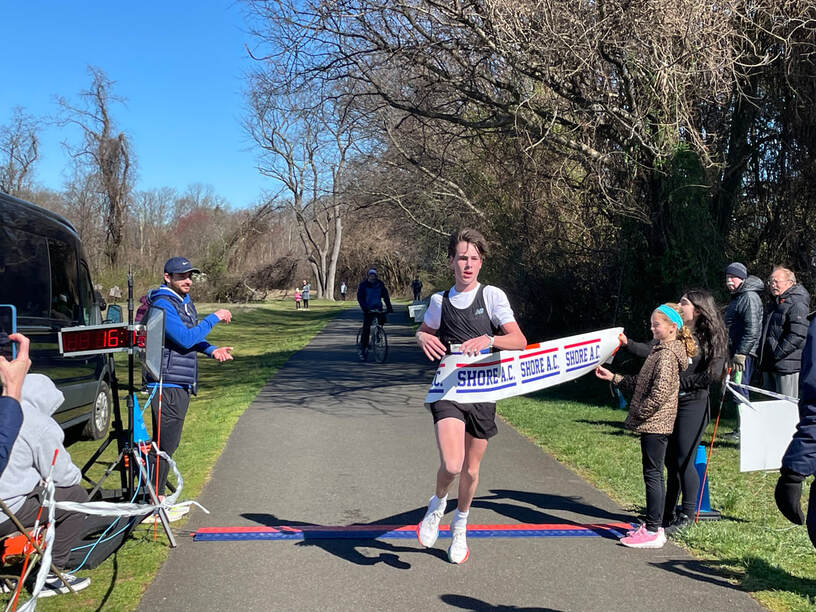
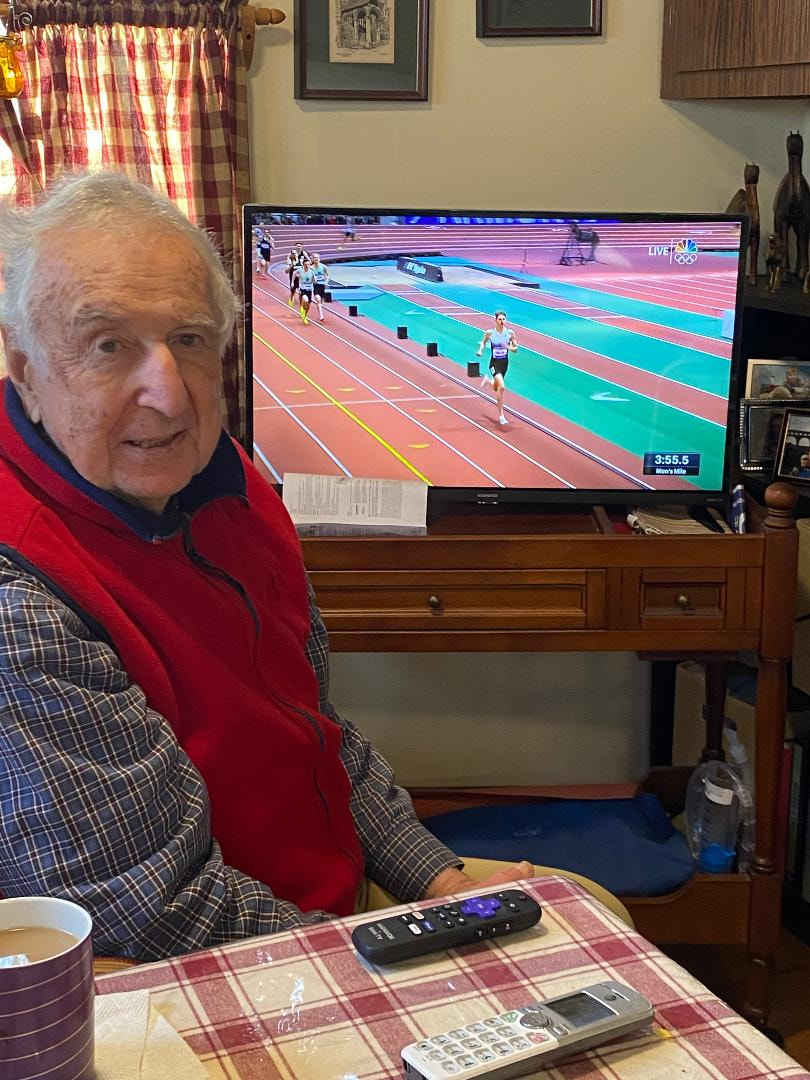
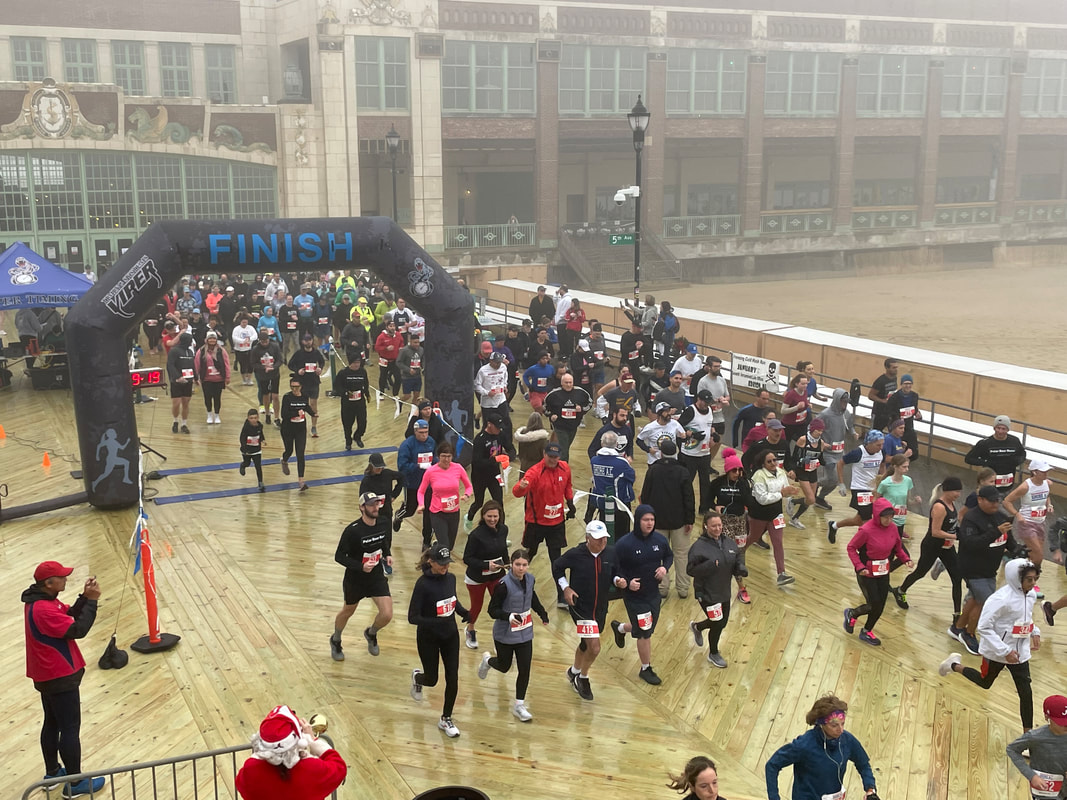
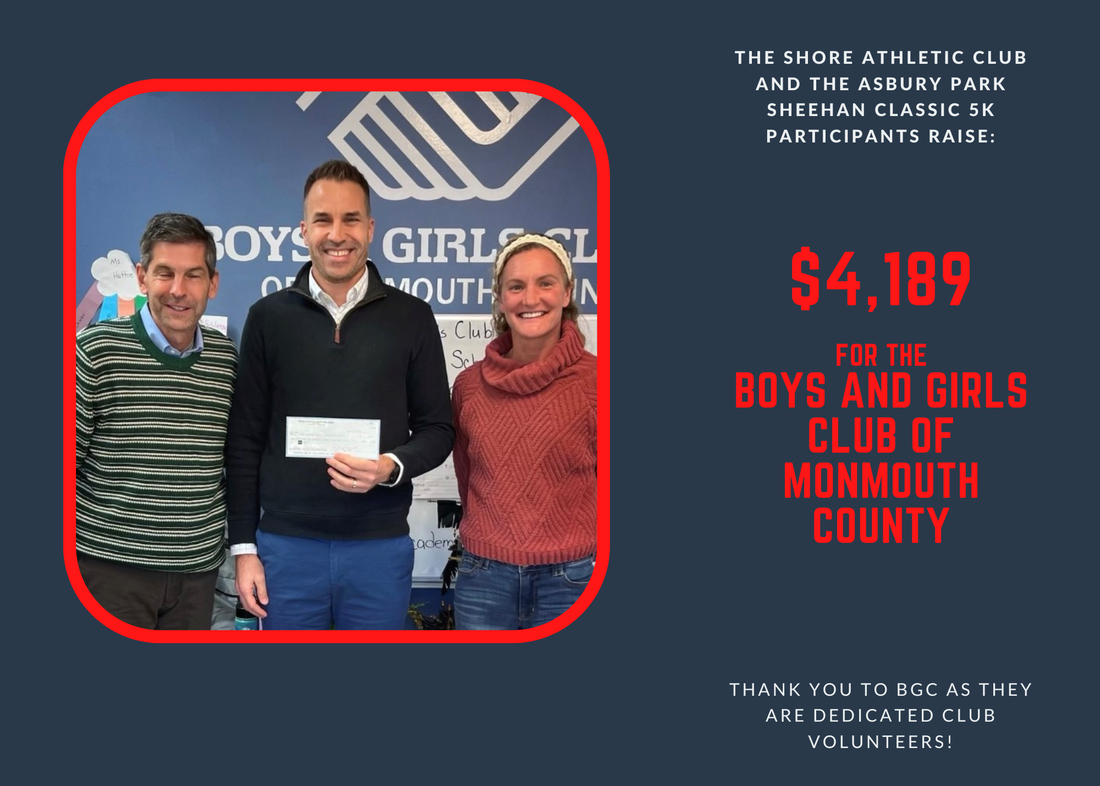
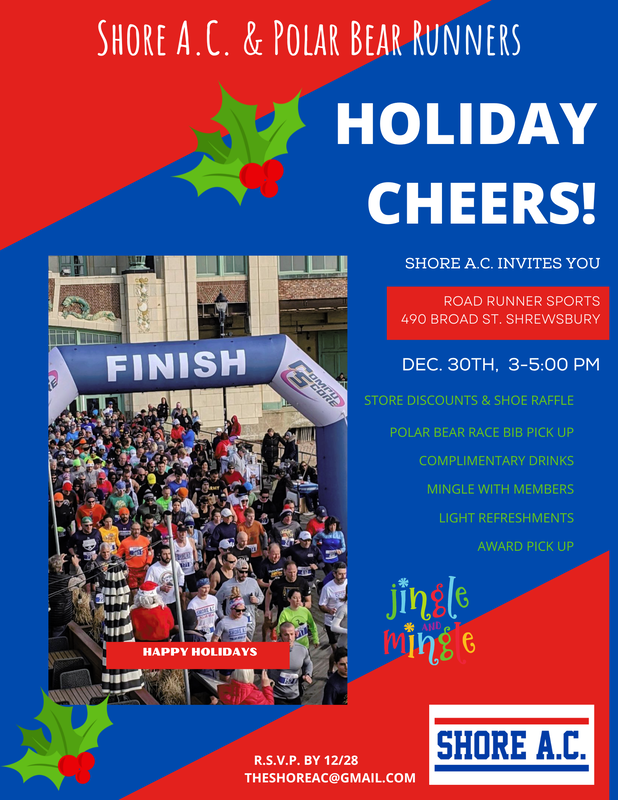
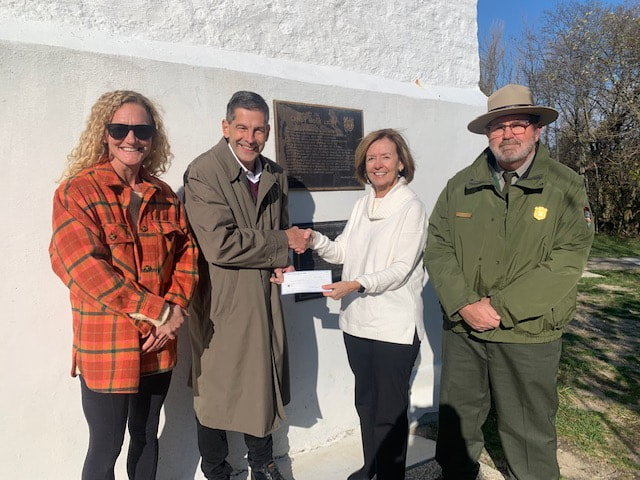
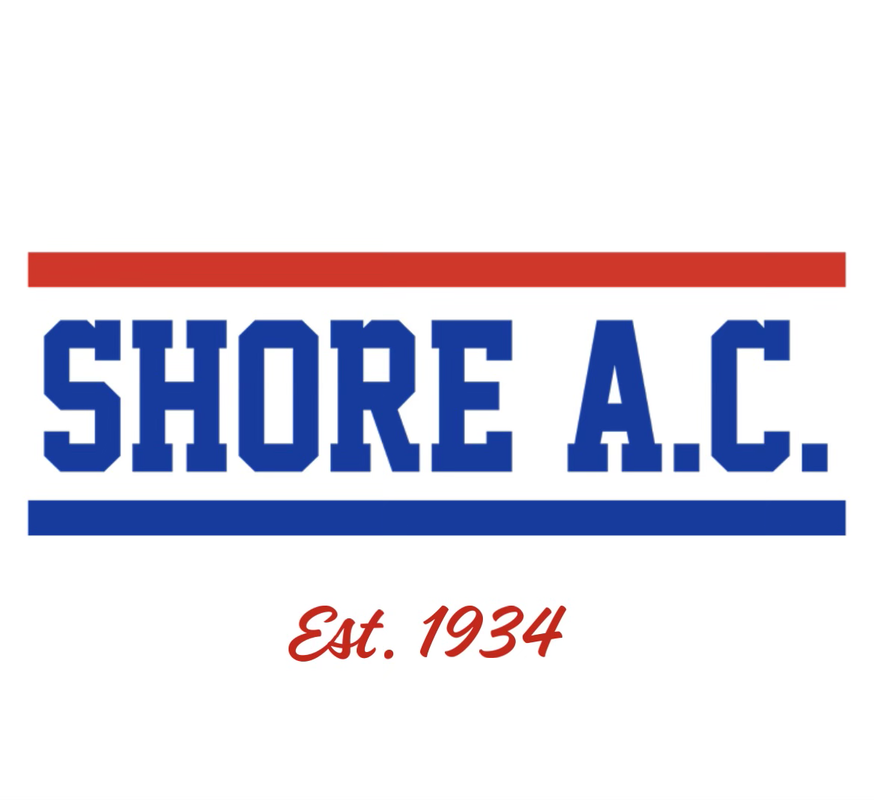
 RSS Feed
RSS Feed



